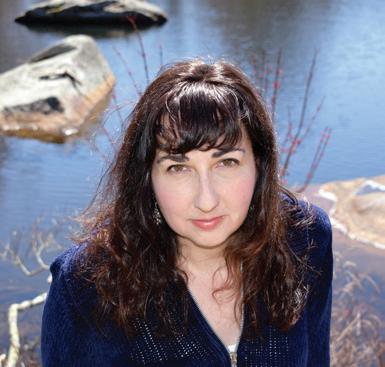
2 minute read
HERITAGE FOODS
Many of New England’s culinary traditions trace their origins to Colonial times, when European settlers’ own food sensibilities became mixed with what they learned from native peoples about preparing the bounty harvested from land and sea. As you travel through the New England states, you’ll have abundant opportunities to taste history.
A genuinely indigenous food, maple syrup was first produced by Native Americans, who marked the harvest with a “sugar moon” celebration of the last full moon before spring. These days, sugarhouses—often run as small-scale, family-run operations— produce maple syrup in every New England state, with VERMONT being the biggest producer not only in this region, but in the entire nation. However, the differences in maple syrup vary less by geography than by grade: Golden, Amber, Dark, or Very Dark (the darker the syrup, the stronger the maple flavor). Just don’t confuse any of these with the artificial “pancake syrup” sold in supermarkets. No self-respecting New England breakfast spot would dream of serving anything but the real thing.
Lobster is another long-time staple of this region, with MAINE as the undisputed king: Posting an annual catch of about 100 million pounds (45.3 million kg), the state’s lobster industry is by far the largest in the United States. There are fishing fleets up and down the Maine coastline, which is also home to top-notch seafood eateries that range from McLoons, a casual seaside shack in South Thomaston, to Eventide Oyster Co., a nationally recognized restaurant in downtown Portland.
➼ Read more: DISCOVERNEWENGLAND.ORG/HERITAGE-FOODS
VERMONT: Producing more maple syrup than any other U.S. state, Vermont is keeping alive a tradition that goes back centuries.
Local Knowledge IN THE FOOTSTEPS OF NEW ENGLAND WRITERS

KIM KNOX BECKIUS
Yankee travel editor and author of New England’s Historic Homes & Gardens
“So many giants of the literary world spent all or part of their lives in New England, and the organizations that preserve their homes do a fine job of keeping their words relevant today. If I could take you to one place in each state where authors’ legacies still loom large, we’d start in my home city—Hartford, Connecticut—and tour the Mark Twain House, where immortal characters like Tom Sawyer and Huckleberry Finn sprang to life, and Stowe Center, home to Harriet Beecher Stowe, abolitionist author of Uncle Tom’s Cabin “We’d swing by Providence, Rhode Island, to wander College Hill in search of the houses and haunts associated with science fiction author H.P. Lovecraft. In Concord, Massachusetts, meanwhile, we’d explore the Old Manse, the Ralph Waldo Emerson House, Walden Pond and, finally, Sleepy Hollow Cemetery, where fans leave pencils on the graves of Emerson, Thoreau, and Hawthorne. We’d tour Little Women author Louisa May Alcott’s Orchard House, too.
“Maine’s first historic house museum, the Wadsworth–Longfellow House in Portland, was where a young Henry Wadsworth Longfellow soaked up the stories of early America he’d retell in poems like ‘Paul Revere’s Ride.’
Speaking of beloved New England poets, we’ll be sure to visit the Robert Frost Farm in Derry, New Hampshire, where we’ll spy the ‘Mending Wall’ from Frost’s well-known verse.
“And if you’ve planned ahead and booked a stay at Naulakha in Dummerston, Vermont, I’ll leave you there, in the 1892 home where Rudyard Kipling penned The Jungle Book, to sit at the author’s desk and write postcards.”










